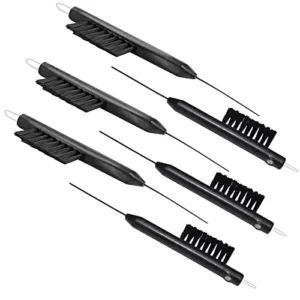Ear Wax And Hearing Aids

Ear wax may seem insignificant, but there are indeed times when your hearing will benefit substantially from removal. In these cases, you might be tempted to search the internet for home remedies or visit the drug store for over-the-counter solutions, but professional medical help may be necessary if the buildup is significant.
What exactly is ear wax?
Ear wax, medically known as cerumen, is essential to keeping your ear canals clean. It’s a substance that begins as the fatty secretions that your ear naturally produces. As these secretions move through your ear canal, they pick up dead skin cells and debris and thus become ear wax. Although ear wax is natural, if it picks up too much debris or dead skin cells, it can lead to excess buildup that can block the ear canal and affect your hearing.
Is ear wax good or bad?
Ear wax plays an important role in protecting the most sensitive parts of your ear. Your body produces ear wax to clear your ear of debris and some bacterial or fungal pathogens. In pushing out these agents, your ears protect your eardrum, which is perhaps the most vital part of the inner ear. Additionally, without any ear wax at all, you’d likely have some unpleasant itching in your ears.
Given the above, ear wax is a healthy bodily secretion – well, up to a certain limit. Removal of excess may be necessary if you’re showing certain symptoms.
How do you know you have excessive ear wax?
You may have excess ear wax buildup or a blockage if you experience any of the following symptoms:
- Earaches
- Dizziness
- Discharge from the ears
- Cough
- An unpleasant feeling of fullness in the ear
- Tinnitus
- Hearing loss
How does ear wax affect hearing aids?
Naturally, ear wax can make its way onto and into your hearing aids – after all, these devices are in contact with the inside of your ear. This may muffle or distort the sounds your hearing aids emit.
The good news is that most hearing aids come with a brush and wax pick for properly removing ear wax. If you don’t have these items, don’t use household items such as cotton swabs and pen caps. Any and all tools not approved for cleaning hearing aids can damage your devices.
What are the best and worst methods of wax removal?
Some of the first ways you might think of to approach ear wax removal are among the most dangerous. Removal methods to avoid are:
- Cotton swabs. Believe it or not, this commonplace method of ear wax removal is ill-advised. The tip of a cotton swab can push this substance deeper into your ear, thus leading to more buildup that’s harder to reach and extract. Pushing ear wax too deep into your ear can also puncture the eardrum. If you’re especially aggressive, you could even scratch your ear canal and expose it to bacteria or fungi. Ear infections can result.
- Ear candling. This highly dangerous approach involves inserting a burning candle in your ear. The idea underlying this method is that the burning of the candle creates a small amount of suction or melts the wax. However, the American Academy of Otolaryngology–Head and Neck Surgery says that ear candling is both ineffective and dangerous opens in a new window given the potential for burns.
Several effective removal alternatives exist. These approaches include:
- Mineral oil. Some doctors recommend inserting a small amount of mineral oil and warm water into the ear canal to loosen blockages. Once you’ve added this solution to your ear, keep your head tilted and let the solution sit in your ear for 10 to 15 minutes. Note that this approach can be dangerous if you have an ear infection or a perforated inner ear.
- Hydrogen peroxide. A warm solution of hydrogen peroxide and water can be used in place of the mineral oil mixture described above. The same instructions and precautions apply.
- Water irrigation. This method involves using a bulb syringe to gently stream warm water into the ear (using cold water can lead to intense dizziness or vertigo). As with mineral oil, this approach is unsuitable if your ear is infected or perforated. It can also lead to problems if ear tubes have been surgically placed inside your ears.
- Over-the-counter ear wax drops. In addition to the above home ear wax remedies, some doctors may recommend over-the-counter drops to soften the wax. These drops work similarly to the above solutions, but each brand may have different instructions for its product. Always follow only the instructions on your box’s packaging or ask your doctor if you have questions.
Although ear wax typically won’t cause problems in your everyday life, they may cause issues for your hearing aids. Cleaning ear wax from your hearing aids ensures that they continue to work properly for years to come. If you have questions about maintaining your hearing aids, the audiologists at I Love Hearing can answer your questions. Book an appointment now at any of our three Long Island locations.

